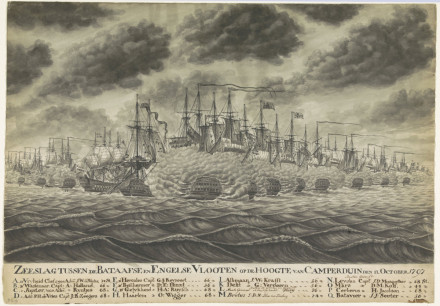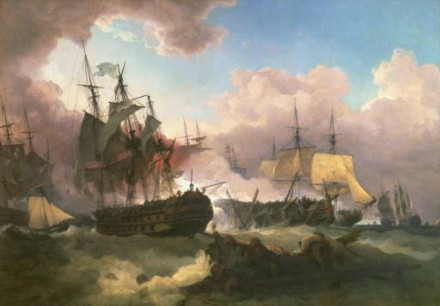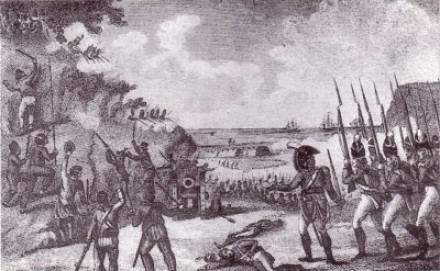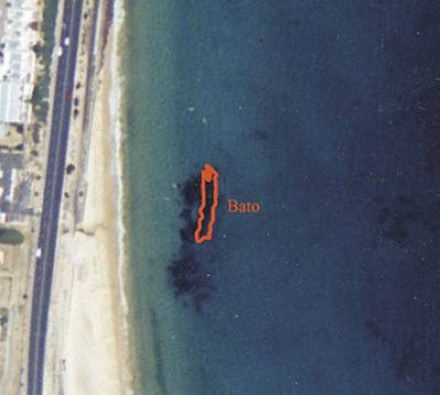History
The Dutch third-rate ship-of-the-line Staten-Generaal was built in 1784, at the end of the Fourth Anglo-Dutch War (1780-1784). During these final years of the Dutch Republic, the Dutch navy was in bad shape, and ships were constructed according to outdated designs. With its tonnage of 800 tons, three masts and 76 cannon, Staten-Generaal was one of the largest ships of the struggling Dutch fleet.

After the Batavian Revolution of 1795, the Staten-Generaal served in the Batavian Navy, captained by Samuel Story, during the Battle of Camperdown in 1797. The battle was the most significant action between British and Dutch forces during the French Revolutionary Wars and resulted in a complete victory for the British, who captured eleven Dutch ships without losing any of their own.
During the battle, the Staten-Generaal caught fire. While the fire was being extinguished the ship drifted leeward, removing her from the action. Story succeeded in safely returning the ship to the Netherlands.

The English flagship Venerable fires a broadside against the Dutch Vrijheid during the Battle of Camperdown. Painting by Philip James de Loutherbourg (1740-1812).
Floating battery
After reparations, the Staten-Generaal was dispatched to the Southern hemisphere, to serve the Republic at the Cape Colony, modern day South Africa. The ship was, however, found to be in such a bad condition that the Bato- as she had been renamed in 1798 - was used as a floating gun platform to guard the entrance of Simon's Bay, Cape Town. On January 9th, 1806, days before the Dutch colony fell to the British, the Bato was scuttled and burnt in order to prevent capture by the English.

Description
Original name: Staten-Generaal
3rd rate ship of the line
Armament: 76 cannons
Tonnage: 400 last/800 tons
Status
Since the 1806 incident, the wreck of Bato has been well known among local inhabitants. Lying in the clear shallow water Simon's Bay, the ship has been the target of several salvage operations, during which a number of cannons were lifted. Still, a significant part of the lower hull and cargo hold has remained intact, hidden beneath a thick layer of seaweed. The wreck measures about 50 meters in length, 8 meters in width and extends over an area of around 400 m2.
The wreck was excavated as a joint venture between Maritime Archaeologist Bruno Werz and a Hungarian company called Octopus. It produced a relatively small artefact collection, now held at the Iziko South African Museum and the excavation records are held by the SAHRA heritage database.

-vase found at the wreck site of the Bato
There have been numerous projects and studies of the wreck in recent years, including an archaeological investigation and two master’s degree research projects. A thesis has been done as part of a master’s degree (Mollema, Ivor 2014) which involved a lot of thorough archival research done at the Dutch archives.
Since the site was designated as a Marine Protected Area in 2004, access to the site is restricted.

References
- SAHRA Database.
- Lesa la Grange, Martijn Manders, Briege Williams, John Gribble and Leon Derksen (2024).
Dutch Shipwrecks in South African Waters: A Brief History of Sites, Stores and Archives [Unpublished]. - Bato (1806) and Brunswick (1805) Shipwreck Project Interim Progress Report December 18, 2014.
- Mollema, I (2015).
Technology and Empire: Comparing the Dutch and British Maritime Technologies during the Napoleonic Era (1792–1815.